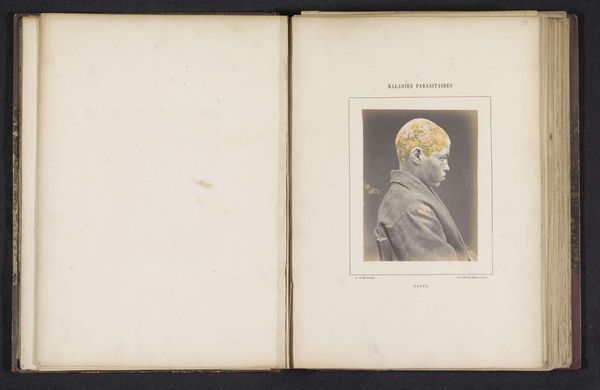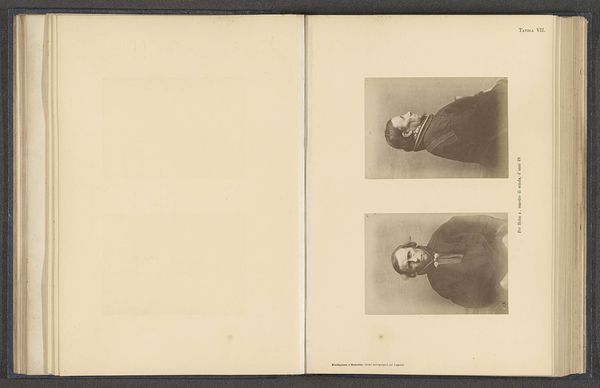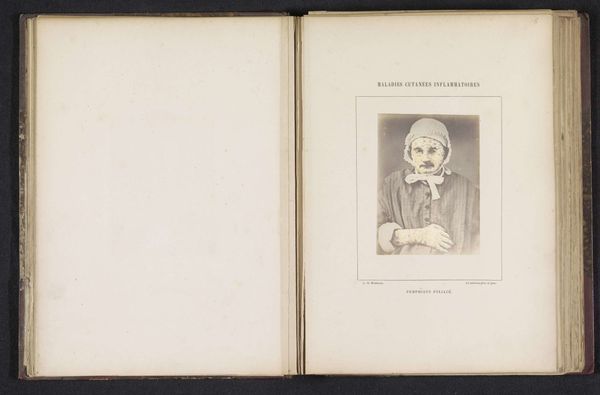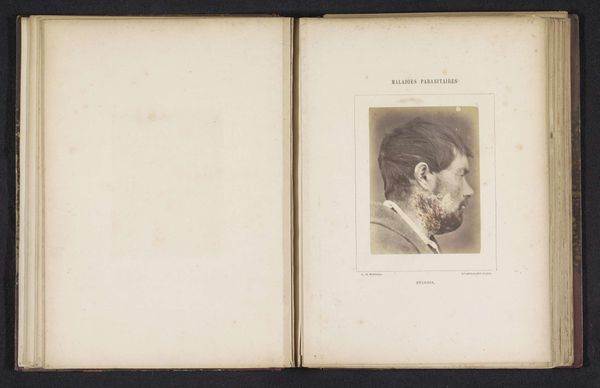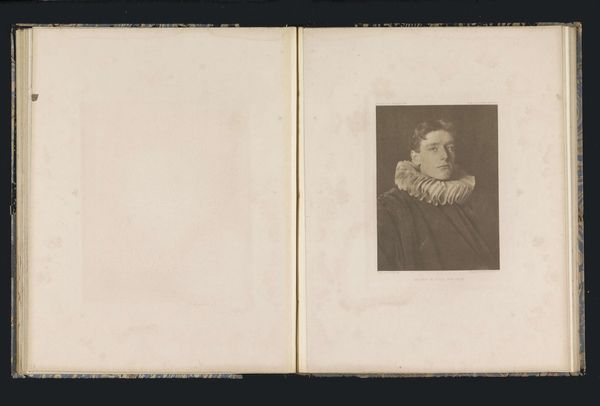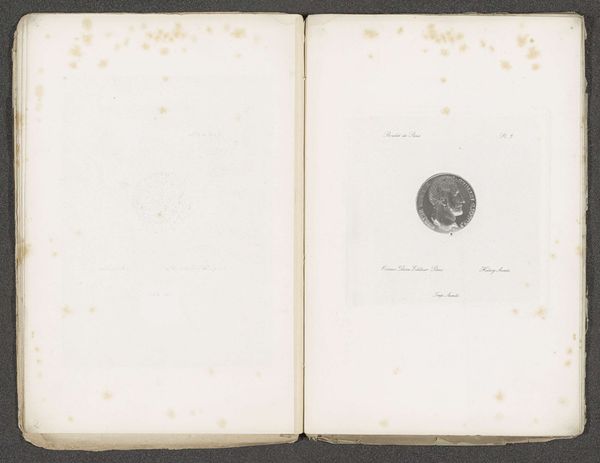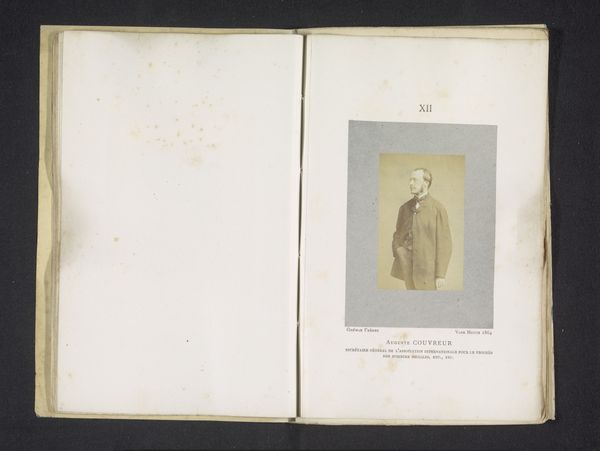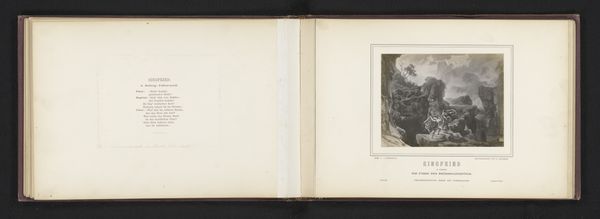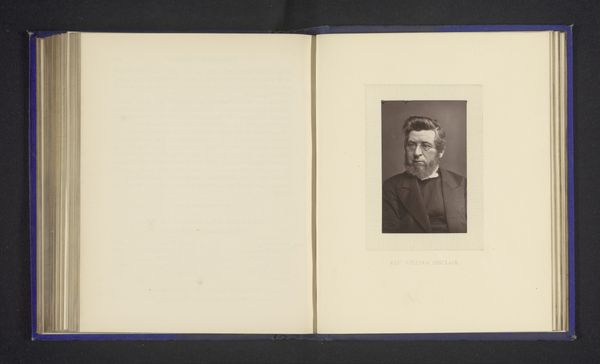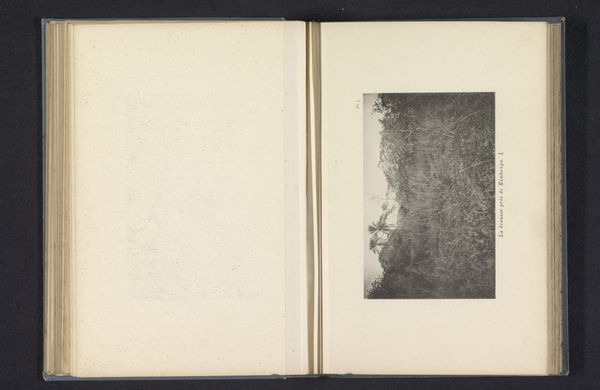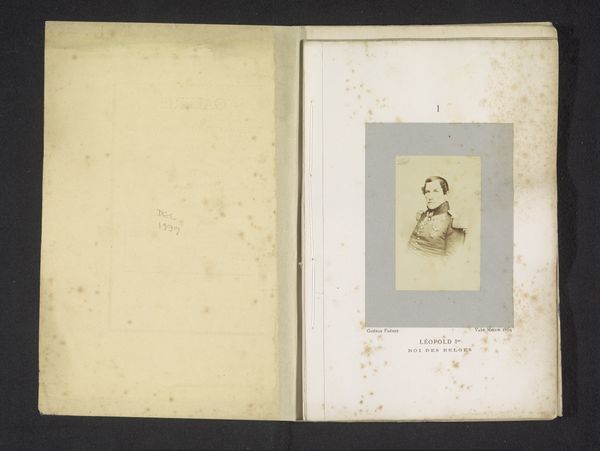
photography
#
portrait
#
photography
#
watercolor
#
realism
Dimensions: height 115 mm, width 90 mm
Copyright: Rijks Museum: Open Domain
Curator: Here we have an image that’s difficult, unsettling. This is “Portret van een onbekende vrouw die lijdt aan krentenbaard,” or Portrait of an unknown woman suffering from impetigo, dating from approximately 1860 to 1868 by A. de Montméja. Editor: It looks painful. My first impression is just how incredibly sad her eyes seem, despite the clinical context. Curator: Absolutely. I can only imagine what she must have felt as she posed for this portrait of suffering. But even so, there’s something noble, even haunting, in her gaze, that reminds me of those early portraits in photography, where you were trying to catch a fragment of your soul in silver nitrate. Editor: Indeed, because the means by which this portrait was made are crucial. Photography emerged then, offering this relatively democratic and “objective” means of portraying likeness…yet it was quickly mobilized by science and medicine. And there’s something very unsettling in its role documenting disease here. It raises ethical questions on the relationship between science and the individual. Curator: It speaks to me about mortality and beauty, even where we don't expect to find it. Perhaps it’s in how Montméja allowed her strength to emerge amidst vulnerability. There’s something sacred in those fleeting glimpses of light trapped forever, which makes me wonder about dignity and identity during vulnerable times. Editor: Right, how this portrait reveals power dynamics inherent in photographic representation and the medical gaze. It speaks volumes about how a lens could both record and potentially stigmatize an individual within societal structures of knowledge and authority. Curator: Yes. She might be anonymous in some ways, yet utterly present—stripped down and yet somehow gloriously resilient. This image reminds me to consider all sides to it. Editor: It leaves me with the sobering reflection about how artistic mediums such as photography reflect our era's obsessions—here science and classification—often with the marginalized at center stage.
Comments
No comments
Be the first to comment and join the conversation on the ultimate creative platform.
